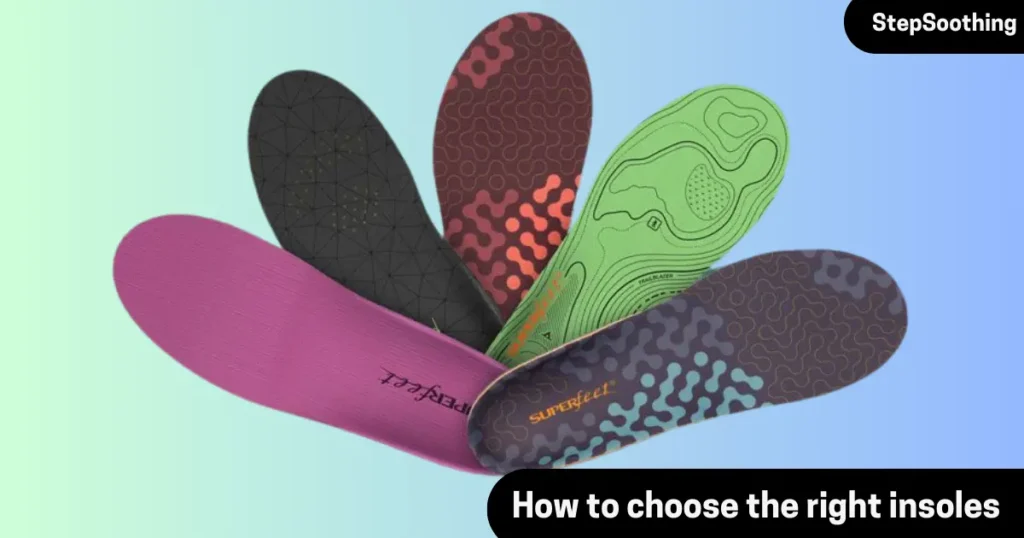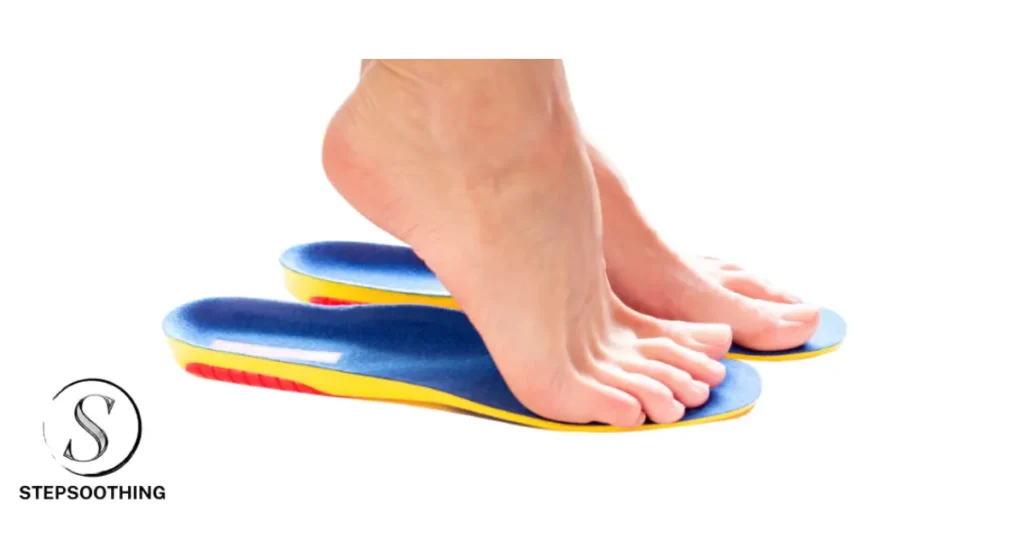Insoles, commonly referred to as shoe inserts, are a fundamental aspect of footwear, yet their significance is frequently overlooked. Despite their modest dimensions, insoles hold immense importance in offering both support and comfort to your feet. Whether you’re grappling with foot discomfort, contending with conditions such as plantar fasciitis, or striving to elevate shoe comfort levels, understanding how to choose the right insoles is paramount for maintaining optimal foot health and overall well-being.

Understanding the Basics of Insoles
1.What are insoles and why are they important?
Insoles are inserts that are placed inside shoes to provide additional support, cushioning, and comfort to the wearer. They help in absorbing shock while walking or running, reducing pressure on the feet, and improving overall shoe fit. Insoles are important because they can alleviate foot fatigue, distribute weight more evenly, and prevent foot-related issues.
2.How do orthotic insoles differ from regular shoe inserts?
Orthotic insoles are specially designed to offer more targeted support and relief for specific foot conditions or structural abnormalities. Healthcare professionals often recommend them to address issues like overpronation, plantar fasciitis, or high arches. Regular shoe inserts, on the other hand, provide basic cushioning and can enhance comfort but may not offer the same level of customized support as orthotic insoles.
3.What types of insoles are available in the market?
Insoles come in a variety of options to cater to different foot needs and preferences. Memory foam insoles mold to the shape of your feet, while heat-moldable insoles offer customization for a perfect fit among the wide range of choices available. Whether you need arch support, impact absorption, or relief from foot pain, there is an insole out there to suit your requirements.

Identifying Your Foot Needs
1.How can you determine the right insole for your arch type?
Understanding your arch type is crucial in selecting the appropriate insole. Flat feet may require insoles with ample arch support to reduce strain on the arch and provide stability. Conversely, high arches may benefit from insoles that offer cushioning and support to prevent excessive pressure on the ball of the foot.
2.What insoles provide the best support for flat feet?
Healthcare professionals often recommend orthotic insoles with built-in arch support for individuals with flat feet. These insoles help distribute weight evenly, reduce overpronation, and alleviate discomfort associated with flat arches. Look for full-length insoles that provide comprehensive support throughout the foot.
3.Do you need special insoles for conditions like plantar fasciitis?
Yes, individuals with plantar fasciitis can benefit from orthopedic insoles that offer targeted support and cushioning to relieve heel pain and inflammation. These insoles may feature a rigid design to support the arch and help reduce strain on the plantar fascia, providing much-needed comfort for those dealing with this common foot condition.

Choosing the Right Insole for Your Shoes
1.Factors to consider when selecting the right insole for your shoes
When choosing the right insole, factors such as arch type, foot size, shoe style, and intended use should be taken into account. Consider whether you need additional support, cushioning, or correction for foot alignment issues, and opt for an insole that addresses your specific requirements.
2.Why is it important to choose the correct size of insoles for your shoes?
Selecting the correct size of insoles ensures proper fit and functionality within your shoes. Ill-fitting insoles can cause discomfort, rubbing, and may not provide the necessary support for your feet. Always follow sizing guidelines provided by the manufacturer to get the most out of your insoles.
3.Should you opt for memory foam insoles or heat-moldable insoles?
The choice between memory foam insoles and heat-moldable insoles depends on your comfort preferences and foot needs. Memory foam insoles offer instant cushioning and conform to the shape of your feet over time. On the other hand, heat-moldable insoles can be customized for a precise fit and optimal support, making them a great option for individuals seeking personalized comfort.

Shopping for Insoles
1.Where can you buy quality insoles that offer the support you need?
Quality insoles can be found at specialty shoe stores, podiatrist offices, orthotic clinics, and online retailers. Look for reputable brands that offer a range of insole options tailored to different foot conditions and preferences to ensure you get the support you need.
2.Do you need to buy a full-length pair of insoles or just heel inserts?
The decision to purchase full-length insoles or heel inserts depends on the level of support and coverage you require. Full-length insoles provide overall foot support and comfort, while heel inserts are more targeted for heel pain relief. Consider your specific needs before making a purchase.
3.Are there insoles designed specifically for dress shoes or casual shoes?
Yes, there are insoles tailored for different types of shoes, including dress shoes and casual footwear. Look for thin, discreet insoles for dress shoes that provide cushioning without crowding the shoe, or opt for more substantial insoles with added support for casual shoes that see more wear and tear.

Ensuring Comfort and Support
1.How to know if the insole is providing enough support for the foot?
A well-fitted insole should offer adequate support to the arch, heel, and ball of the foot. If you experience reduced foot fatigue, improved alignment, and decreased pain while wearing the insoles, it indicates that they are providing the necessary support for your feet.
2.What are the signs that indicate you need to replace your current insoles?
Over time, insoles may wear out and lose their cushioning and support properties. Signs that you need to replace your current insoles include visible wear and tear, decreased comfort, increased foot pain or fatigue, and a lack of responsiveness in providing adequate support.
3.What features make insoles work best for different shoe sizes and styles?
Insoles that offer a versatile fit for a range of shoe sizes and styles are characterized by customizable features like trimmable edges, adjustable arch support, and moisture-wicking materials. Look for insoles that cater to your unique foot shape and shoe preferences to ensure optimal comfort and support.
Conclusion for How to choose the Right Insoles
In conclusion, selecting the appropriate insoles is crucial for comfort and foot health. Consider factors like foot type, activity level, and specific needs. Prioritize support, cushioning, and proper fit to enhance comfort and reduce the risk of foot-related issues. Choose wisely to enjoy improved comfort and overall well-being.
Frequently Asked Questions
Q1.How do I know what insoles I need?
To figure out the best insoles for you, consider your foot arch type, any foot conditions you have, and how much support and cushioning you require.
Q2.How do I choose an insole size?
Pick insoles that match your shoe size or trim them to fit if needed for comfort and effectiveness.
Q3.Are expensive insoles better?
Price doesn’t always mean better quality. Look for features that suit your needs rather than focusing solely on the cost.
Q4.Should insoles be hard or soft?
The choice between hard and soft insoles depends on personal preference and foot condition. Hard insoles offer more support, while soft ones provide cushioning.
Q5.Will insoles make shoes tighter?
Insoles can make shoes tighter depending on their thickness and material. If your shoes feel too tight with the insoles, you may need to adjust the lacing or opt for thinner ones.
For more information on insoles, check out Introduction to Insoles. If you’re interested in a 5 Debunking Myths About Insoles and Orthotics, explore our guide here.



